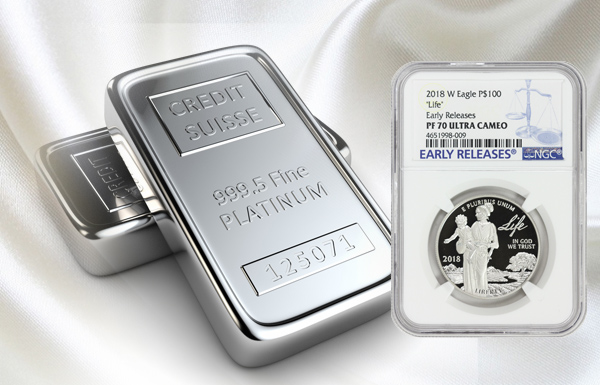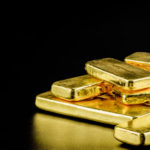Platinum
THANK YOU FOR POSTING A REVIEW!
Your review was sent successfully and is now waiting for our staff to publish it.
To gain an understanding of how rare Platinum is, consider this… all the Platinum ever mined could fit in the living room of an average sized home! It’s also scarce. While Gold is relatively abundant in many parts of the world, large Platinum deposits have only been found in two places; South Africa and the Ural Mountains of Russia. 10 tons of ore must be removed from the earth and painstakingly processed to yield a single ounce of this precious metal. It has been sought after by everyone from the ancient Egyptians to Louie the 16th, who proclaimed it, “the only metal fit for royalty”. It’s the ideal metal for jewelry because Platinum is so hard; many claim it never wears down. Because of these qualities, it’s no wonder Platinum is often referred to as “The Rich Man’s Gold”. And many industries have found this precious metal beneficial as well.
Besides jewelry, Platinum can be found in laboratory equipment, electrical contacts, electrodes, thermometers and dentistry equipment. Over one-third of all Platinum mined and processed each year is used in catalytic converters for automobiles. The increased automobile emission standards around the world now require auto manufacturers to use more and more Platinum in catalytic converters. Watchmakers appreciate the unique properties of Platinum because it neither tarnishes nor wears out. Rolex, Breitling, and other famed watch companies use Platinum for producing their limited edition watch series. Some compounds, found only in Platinum, are even used in chemotherapy for cancer patients.
What does this mean to the coin investor? It means that buying Platinum coins is an excellent way to grow your wealth in these uncertain financial times. Like all collectible, investor grade coins, scarcity, beauty and demand generally keep the price going up. With a Platinum coin, it only stands to reason that its rarity will not only sustain its value, it will also increase that value substantially over time.
A Brief History
The name Platinum comes from the Spanish word, platina meaning "little Silver". Its popularity may seem new but there is evidence that it is was prized by ancient cultures from the Inca’s of South America to the Egyptians. The first European reference to Platinum appears in the 1557 writings of the Italian humanist Julius Caesar Scaliger as a description of an unknown “noble” metal found in Central America. It was so hard Scaliger said of Platinum, "no fire nor any Spanish artifice has yet been able to liquefy it."
In 1741, a British metallurgist named Charles Wood, found samples of Colombian jewelry made of Platinum in Jamaica. Several years later, Wood and a colleague presented a detailed study of this rare metal to the Royal Society. They were astounded by its beauty and hardness and soon after, many European scientists begin experimenting with Platinum. Because of its white, lustrous appearance, many started referring to it as "White Gold”.
Platinum reached its peak of popularity in the early 1900’s. It surpassed Gold as the preferred metal for all fine jewelry in America, for those who could afford to pay the price. But once World War II began, the United States government declared Platinum a strategic metal and banned its use and sale in all non-military applications. Consumer demand however stayed high, so jewelers begin using actual White Gold in the place of the preferred Platinum. After the war, Platinum was restored to non-military usage and remains one of the most sought after precious metals for jewelry and collectible coins.
-
Global Silver Deficit To Rise In 2024 Due To Higher Demand, Lower Supply By
Mint State Gold
April 17 2024







